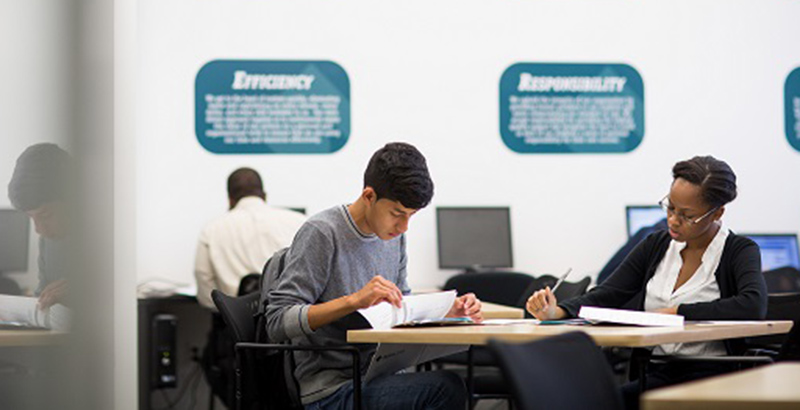Mentoring Program Posts 81% College Persistence Rate With Focus on In-Person Coaching, Affordability, New Study Finds

A college mentoring program aimed at getting low-income and first-generation students into and through college has proven to be effective in an area where other interventions have failed: college persistence.
That’s according to a new randomized control trial released in October, which found that students who participated in the program Bottom Line were 14 percentage points more likely to still be enrolled in a four-year institution two years after high school than their peers who didn’t receive this support.
“The most surprising thing relative to the research landscape is that the effects grow so much over time,” said Andrew Barr, assistant professor of economics at Texas A&M University and co-author of the study. “These effects are very consistent across different types of students … our results really suggested [Bottom Line] should scale well.”
Last year, 81 percent of Bottom Line’s six-year cohort graduated from college — the national six-year cohort graduation rate is 59 percent, according to the most recent data from the National Center for Education Statistics. And this is significantly better than an eight-year cohort rate tracked by NCES for low-income students, of whom only 14 percent had earned a bachelor’s degree.
College advising and mentoring programs to help at-risk students have grown more popular over the years, with their roots dating back to the late 1960s and ’70s. Bottom Line is one of 383 similar organizations that make up the National College Access Network, which serve about 2 million students. But despite the reach and history of these programs, Barr and study co-author Benjamin Castleman of the University of Virginia write that more research is needed to show how these programs help students over time.

The new research underscores the power of mentoring throughout college. What makes Bottom Line’s program unique is its one-on-one, in-person counseling that continues from high school into universities and its push to send students to affordable schools, said Greg Johnson, interim CEO of the nonprofit.
Founded in 1997, the organization is serving 7,000 students this year with 79 full-time counselors. Each has a caseload of 60 to 85 students who are low-income and the first in their family to attend college. Bottom Line reaches out to high school students through counselors or community organizations, and the students can apply if their family income is below 200 percent of the federal poverty guidelines. Students enter Bottom Line during their last year of high school and receive in-person support in applying to schools, finding financial aid, and picking the best college for their budget.
“We think a lot of the mistakes being made of students dropping out and not completing [college] is that they’re picking a school and not able to afford to go to college,” Johnson said. “One of our key advantages is we help students make a conscientious choice they can afford for the long haul.”
Bottom Line also doesn’t want its students taking on any more than $36,000 in debt over the course of college (the national average was $37,000 in 2016, U.S. News reported). The last cohort averaged $25,000 in debt, Johnson said.
Personal mentoring continues into college, with students receiving a new counselor depending on the university they choose. But Bottom Line limits its in-person counseling to students who attend specific universities — primarily large, state schools — in the three states they serve: 22 schools in Massachusetts, 22 in New York, and 12 in Illinois.
These face-to-face interactions happen several times a semester between the students and their counselors. Although some counseling takes place virtually, building personal connections is important for Bottom Line’s success, Johnson said. Counselors gives college students advice on everything from which classes to take, to making sure their credit hours are on track, to finding support on campus for subjects that they struggle in.
The study found that the effects of the program were the same regardless of the student demographic, regardless of geography, and regardless of the counselor serving the student. This is all promising when trying to identify programs that can scale successfully, said Barr.
The researchers aren’t done looking at Bottom Line. They’ll continue following these same cohorts of students through their college graduation and into careers to measure their success.
Get stories like these delivered straight to your inbox. Sign up for The 74 Newsletter

;)
